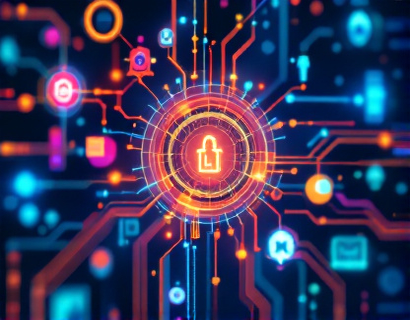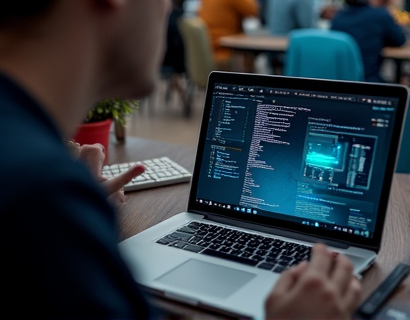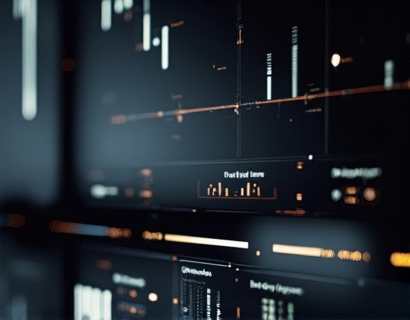Ethereum Layer 2: 2025 Insights for Developers and Enthusiasts on Scalability and Interoperability
As the Ethereum ecosystem continues to evolve, Layer 2 solutions have emerged as a critical component in addressing scalability and interoperability challenges. This comprehensive guide aims to provide developers and enthusiasts with essential insights and updates on the latest Layer 2 technologies, helping them navigate the dynamic and rapidly changing landscape of Ethereum.
Layer 2 solutions are designed to enhance the performance of the Ethereum network by processing transactions off the main chain, thereby reducing congestion and lowering transaction fees. These solutions include state channels, sidechains, and rollups, each with its unique approach and benefits. Understanding the intricacies of these technologies is crucial for anyone looking to stay ahead in the Ethereum ecosystem.
Understanding Rollups
Rollups are one of the most promising Layer 2 solutions, offering significant improvements in scalability and cost efficiency. There are two main types of rollups: Optimistic Rollups and ZK Rollups.
Optimistic Rollups bundle multiple transactions into a single transaction on the main Ethereum chain, assuming all transactions are valid. If any transaction is found to be invalid, the rollup can be challenged, and the fraudulent transaction is reversed. This approach significantly reduces the load on the main chain while maintaining security through a challenge period.
ZK Rollups, on the other hand, use zero-knowledge proofs to bundle and verify transactions off-chain. These proofs ensure that all transactions are valid without revealing the transaction details, providing a higher level of privacy and security. ZK Rollups are generally more complex but offer faster finality and lower fees compared to Optimistic Rollups.
Both types of rollups have gained traction in the Ethereum community, with several projects and platforms already implementing them. For developers, understanding the differences between Optimistic and ZK Rollups is essential for choosing the right solution for their applications.
State Channels: A Closer Look
State channels are another Layer 2 solution that enables multiple transactions to occur off the main chain, with the final state being submitted to the Ethereum network once the channel is closed. This method is particularly useful for applications that require frequent and fast transactions, such as gaming and decentralized finance (DeFi).
State channels work by establishing a secure communication channel between parties, where they can send and receive assets without each transaction being recorded on the main chain. The final state of the channel, including all transactions, is then locked and submitted to the main chain, ensuring transparency and security.
One of the key advantages of state channels is their low latency and low cost, making them ideal for real-time applications. However, they require careful management of channel state and secure communication to prevent fraud. Developers need to implement robust mechanisms to handle channel opening, closing, and state submission.
Interoperability: Bridging the Gap
Interoperability is a critical aspect of the Ethereum ecosystem, enabling different blockchain networks to communicate and transfer assets seamlessly. Layer 2 solutions play a vital role in enhancing interoperability, allowing for more complex and interconnected decentralized applications (dApps).
Cross-Link protocols, such as Polygon's XCP and Binance Smart Chain's BEP-20 bridges, facilitate asset transfer between Ethereum and other blockchains. These protocols use sidechains or wrapped tokens to ensure compatibility and security across different networks.
For developers, understanding interoperability protocols is essential for building applications that leverage the strengths of multiple blockchains. This not only enhances user experience but also opens up new opportunities for cross-chain DeFi and gaming applications.
Current Trends and Developments
The Layer 2 space is rapidly evolving, with several trends and developments worth noting in 2025. One significant trend is the increasing adoption of ZK Rollups, driven by their superior performance and privacy features. Projects like Arbitrum and Optimism are leading the charge, attracting major DeFi and NFT platforms to migrate to their networks.
Another trend is the growth of hybrid solutions that combine multiple Layer 2 techniques to maximize benefits. For example, some projects are integrating state channels with rollups to achieve both low fees and high throughput. These hybrid approaches offer a balanced solution for applications with varying transaction volumes and requirements.
Regulatory attention is also shaping the Layer 2 landscape. As more users and businesses adopt decentralized technologies, regulators are beginning to take notice. Compliance and legal frameworks are evolving to address the unique challenges posed by Layer 2 solutions, which developers must stay informed about to ensure their projects remain compliant.
Best Practices for Developers
For developers looking to implement Layer 2 solutions in their projects, several best practices can help ensure success:
- Choose the right Layer 2 solution based on your application's specific needs, considering factors like transaction throughput, latency, and cost.
- Stay updated with the latest developments and updates from Layer 2 projects to leverage new features and improvements.
- Implement robust security measures, especially when dealing with off-chain transactions and state management.
- Test thoroughly in a simulated environment before deploying to the main network to identify and fix potential issues.
- Engage with the community and seek feedback to refine your implementation and address user concerns.
By following these best practices, developers can build scalable and efficient dApps that take full advantage of Layer 2 technologies.
Future Outlook
Looking ahead, the Layer 2 ecosystem is poised for significant growth and innovation. The Ethereum 2.0 upgrade, with its shift to a proof-of-stake consensus mechanism, will further enhance the network's scalability and reduce gas fees, making Layer 2 solutions even more attractive.
Additionally, the integration of Layer 2 technologies with other blockchain projects and the expansion of cross-chain interoperability will create a more interconnected and efficient decentralized web. Developers who stay ahead of these trends will be well-positioned to capitalize on the opportunities presented by the evolving Ethereum ecosystem.
In conclusion, Layer 2 solutions are a cornerstone of Ethereum's scalability and interoperability strategy. By understanding and implementing these technologies, developers and enthusiasts can contribute to the growth and adoption of decentralized applications, ensuring a vibrant and sustainable future for the Ethereum ecosystem.










































